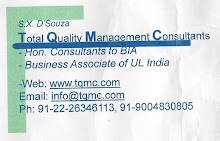DO THEY NEED TO COMPLY WITH THE LOW VOLTAGE DIRECTIVE?
By: Yvonne Halpaus - QNET LLC
Components that should comply with the Low Voltage Directive...include any items that are powered at or switch circuits at voltages in the range of 50 to 1000 VAC or 75 to 1,500 VDC. Such items commonly include mains transformers, relays, contactors, timers, mains disconnect devices, over current trips and circuit boards (required to handle voltages in the range).
Any machinery manufacturer should only use components such as these if they are in compliance with the Low Voltage Directive. For this purpose they must comply with a suitable European Low Voltage safety standard. Only the manufacturers of such items can achieve compliance with the Low Voltage Directive because it is the internal construction of such items that needs to comply and only component manufacturers have any control over this.
Any machinery manufacturer should only use components such as these if they are in compliance with the Low Voltage Directive. For this purpose they must comply with a suitable European Low Voltage safety standard. Only the manufacturers of such items can achieve compliance with the Low Voltage Directive because it is the internal construction of such items that needs to comply and only component manufacturers have any control over this.
Components that should not comply with the Low Voltage Directive...include any of the above items it they operate outside the voltage range stated above and electronic components such as resistors, capacitors, integrated circuits, transistors, etc. Items such as these may be used in control systems or they may be used to construct electronic circuits and do not need to bear the CE-marking.
source












No comments:
Post a Comment